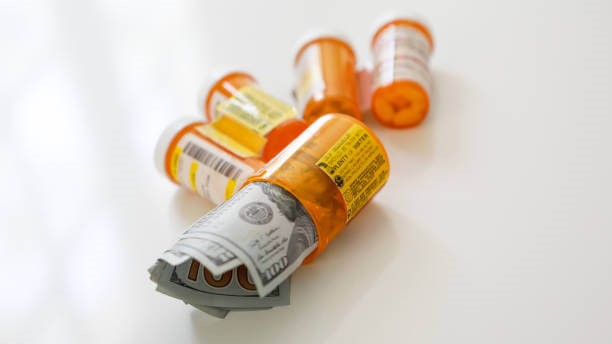You may have heard of the term “Donut Hole” when referring to Medicare Part D. The Medicare Part D “Donut Hole” has historically been a coverage gap in Medicare Part D plans where you were responsible for a higher share of drug costs after your total drug costs reach a certain limit each year.
This article gives you a quick summary of the Donut Hole, what it is and how it impacts you.
What are the Payment Stages of a Medicare Part D Plan?
Before we can explain the Medicare Part D Donut Hole, let us examine the four payment stages in a Medicare Part D plan.
- Stage 1: Annual Deductible
Your annual deductible is the amount you are expected to pay for your prescriptions before your Medicare Plan D plan starts to help cover costs. You will pay the full retail price for drugs up to the annual deductible limit during this stage. However, you may find some plans, may not require a Medicare part D deductible. The maximum allowable deductible for Medicare Part D in 2023 is $505.
- Stage 2: Initial Coverage
After you reach your annual deductible, your plan starts covering some of your prescription drug costs. During this phase, you typically contribute a copayment or coinsurance, while your Medicare Plan D pays for the rest of your prescription drug expenses.
On average, plans are structured to pay 75% of the cost of drugs so that beneficiaries will be responsible for about 25% of drug costs.
When the combined costs of what you and your plan pay reach the “initial coverage limit” (which is $4,660 in 2023), you enter what is called the Medicare Part D Coverage Gap.
- Stage 3: Coverage Gap (also known as the “Donut Hole”)
You typically pay a fixed percentage (25%) of your prescription drugs (generic or branded). However, because plans structure costs during the Initial Coverage phase so that you pay 25% on average, the exact amount you pay during the Coverage Gap phase may differ from that during the Initial Coverage phase.
Once your Part D “true out-of-pocket costs” (also known as “Part D TrOOP”) reaches a threshold amount ($7,400 in 2023), you exit the Coverage Gap and enter the Catastrophic Coverage stage. Your TrOOP includes all costs that you paid out-of-pocket (including any manufacturer discounts – more on this below).
- Stage 4: Catastrophic Coverage
Those who reach this stage have lower copayment and coinsurance for the rest of their enrollment year. They also contribute a relatively smaller percentage of the drug’s cost. In 2023, you will pay the greater of 5% of total drug costs or $4.15/$10.35 for each generic and brand-name drug, respectively.
What is the Donut Hole?
In the past, during the Stage 3: Coverage Gap phase, Medicare beneficiaries who reached the Coverage Gap, had to pay 100% (versus 25% today) of the cost for all their drugs. In other words, Part D plans did not help pay for costs during this stage, and there were no other discounts or other forms of support.
Is there still a Donut Hole?
No – starting in 2012, when the Affordable Care Act (ACA) was enacted, the government introduced discounts to help beneficiaries. People within the Medicare Part D donut hole were required to pay a smaller percentage of drug costs instead of 100%.
The discounts started at 50% for brand-name drugs and 14% for generics, and every year since then, discounts gradually increased until they reached 75% on both branded drugs and generics in 2020.
This effectively closed the so-called “Donut Hole” as beneficiaries’ costs during the Coverage Gap phase (25%) broadly matched what plans cover, on average, during the Stage 2: Initial Coverage Phase.
Can I still enter the Donut Hole?
Yes – while it is no longer really a “Donut Hole”; when your prescription drug expenses (consisting of your deductible, copayments, and coinsurance plus whatever your Medicare Plan D has paid) exceeds the initial coverage limit ($4,660 in 2023), you will enter the Medicare Part D Coverage Gap.
Some medical expenses, however, do not contribute towards the Medicare Part D Donut Hole:
- Prescription drugs that are not covered by your plan
- Medicare part D premiums
- Dispensing fees of pharmacies
While this no longer really impacts the cost to you as a consumer, the Coverage Gap still has implications on how quickly you reach the Catastrophic Coverage phase.
Does the Donut Hole affect everyone?
No – if your prescription drug expenses that you and your plan pay do not exceed the annual limit , you will not enter the Medicare Part D Donut Hole or Coverage Gap. However, everyone who exceeds this limit will automatically enter the Donut Hole or Coverage Gap phase.
What is the cost of drugs during the Medicare Part D Donut Hole?
For brand-name prescription drugs, you will pay 25% of the cost of drugs covered by your Medicare Plan D. You also pay for 25% of dispensing fees, if there are any. Drug manufacturers and your Part D plan contribute 70% and 5% respectively to the cost.
You also pay 25% for generic drugs as long as your part D plan covers the drugs. Your Part D plan pays the remaining 75%.
It is important to understand how your payment contributes towards Part D “true out-of-pocket costs” (TrOOP) during the Donut Hole or Coverage Gap phase as this drives how long you stay in the Coverage Gap.
With brand-name drugs, the full amount you and the drug manufacturer pays (95% together) will be counted as out-of-pocket costs. However, with generic drugs, only the amount you paid (25%) will be considered an out-of-pocket expense in calculating TrOOP.
This means you don’t have to actually spend $7,400 to reach the Catastrophic Coverage. It’s really in the range of $3,000.
Note that TrOOP excludes any amounts paid by your plan. This is different from when you calculate the “initial coverage limit” during Stage 2, which is based on what you AND your plan pay up to that point.
What happens after the Donut Hole?
When your TrOOP hits a specified amount ($7,400 for 2023), you will exit the Medicare Part D Donut Hole and qualify for Catastrophic Coverage.
During this stage, you are only expected to pay the greater of 5% of the drug’s cost, or $4.15/$10.35 for each generic and brand-name drug, respectively. Meanwhile, your Medicare Plan D pays 15%, and the government covers 80% of the cost.
Final Words
Although not everyone may reach the Medicare Part D Donut Hole, it’s still important to understand what it is, track your prescription drug expenses regularly, and check annual limit changes. Use this information to decide on a Medicare Part D plan for the next enrollment period.
At CoverRight, we’re here to help you find the right Medicare coverage that you deserve. Reach out today and start finding the right Medicare plan for you.










